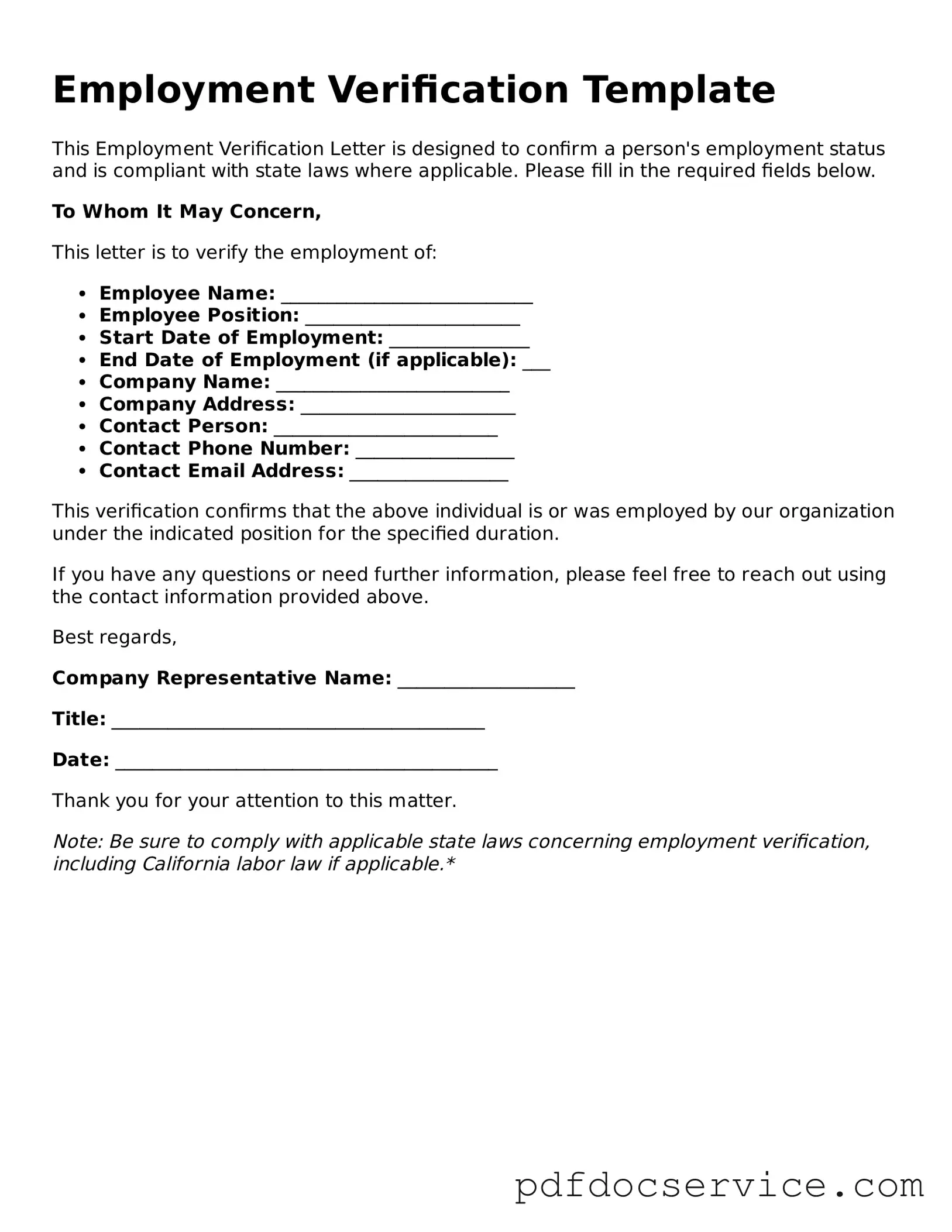The Employment Verification form plays a crucial role in the hiring process, serving as a key tool for employers and employees alike. This document is designed to confirm a candidate's work history, including dates of employment, job titles, and responsibilities. Employers often require this verification to ensure that applicants possess the qualifications they claim. Additionally, the form can help verify salary history, which may be relevant for salary negotiations. It's important to note that the information provided must be accurate and truthful, as discrepancies can lead to serious consequences for both parties. Furthermore, the form may include sections for references and contact information, allowing potential employers to reach out directly for further confirmation. Understanding the nuances of the Employment Verification form is essential for job seekers and employers to navigate the hiring landscape effectively.
